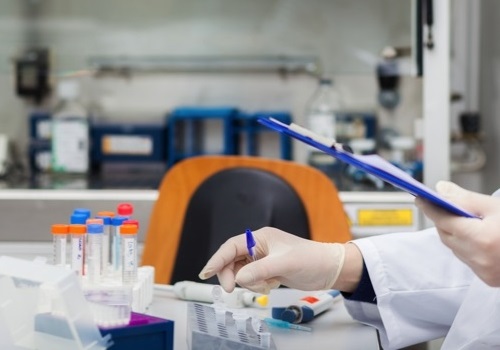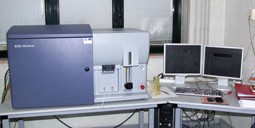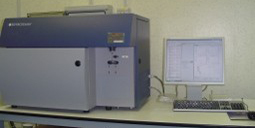- Adult neurogenesis
- Adult neurogenesis, neurogenic stimuli,and gene therapy
- Aging and Dementia
- Alcohol Use Disorders and Pediatric Syndromes – Neurobiology and Oxidative Stress
- Behavioral Neuroscience, Mouse Phenotyping
- Cell Response and Stress Signal
- Cell signaling, epithelial cancer model systems and Schistosome Biology
- DNA replication and genome stability
- Emotionality, Developmental Psychbiology, mu-Opioid
- Environmental security and human health
- Evolution of the Immune System
- Innate Immunity and Inflammation and nanosafety
- Imaging Lab
- Lysophospholipid Signalling for the Development of new Therapeutic Strategies
- Membrane trafficking, RNA metabolism, Duchenne Muscular Dystrophy
- MicroRNAs, LncRNAs, and neuropathologies
- Molecular Enzymology and Evolution
- Molecular Neuro-Oncology
- Molecular oncology and genome instability
- Motor Functions, Pain, Botulinum neurotoxins
- Mucosal Immunology and Immune Nutrition
- Muscle biopathology, noncoding RNAs, gene therapy
- Muscle metabolism, Cell cycle regulators, and muscular dystrophy
- Neurobiology and Neuromolecular Medicine
- Neurobiology of development and ageing
- Neurodegeneration, Neuroinflammation and Pain
- New Strategies for Targeted Immunotherapy
- Skeletal Muscle Regeneration and Muscular Dystrophies
- Preclinical Pharmacology and Clinical Biomarkers
Detoxizymes
Startup
Manager : Giuseppe Manco
Detoxizymes is a biotech company that develops and produces enzymatic systems for environmental decontamination and safety of human health.
Imagensys
Startup
Manager : Alessandro Soluri
Imagensys mission is the development of new detection systems used in nuclear and diagnostic surgery to respond to important challenges in radio-guided surgery: greater speed and greater accuracy in localising lesions and sentinel lymph nodes.
Li-Tech
Spin off
Manager: Alessandro Soluri
Li-tech SpA was created from a National Research Council (CNR) research spin-off. The company’s principal aim is the production of high-technology scintigraphic cameras.
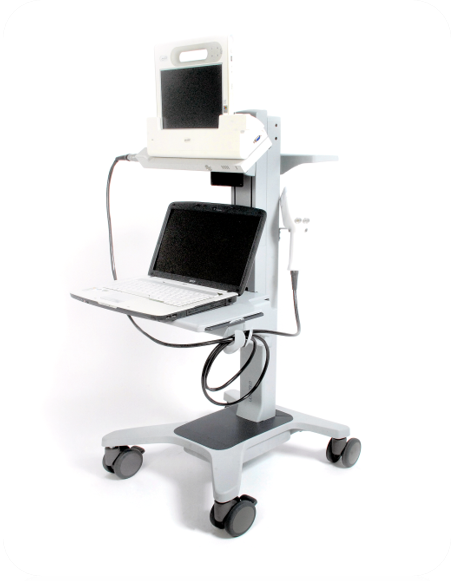
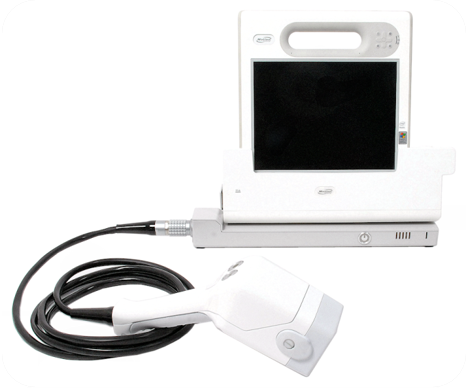
1995
Brevetto titolarità congiunta CNR-Pol.hi.tech “Sonda chirurgica per la localizzazione di tumori per uso laparoscopico o intracavitario “ A. Soluri, G. Scibilia.
Il brevetto è stato ceduto alla Società Pol.hi.tech di Carsoli (AQ) per lo sfruttamento industriale per la realizzazione della prima sonda scintigrafica (gamma probe) utilizzata nella tecnica della ricerca del linfonodo sentinella (Protocollo Veronesi). Deposito nazionale del RM95A000481 del 13/7/1995 – PCT/IT96/00142 del 30.01.1997 USA Patent Number: US 6,021,341 del 1/2/2000 “Surgical probe for laparoscopy or intracavitary tumour localization”.
1997
Brevetto Titolarità CNR “Gamma Camera miniaturizzata ad alta risoluzione spaziale” A. Soluri, R. Pani deposito RM97A000233 del 23/04/1997 – PCT PCT/IT98/00096 del 29.10.1998 – WO98/48300 del 29/10/1998 – US A Patent Number : US 6,242,744 B1 del 5/6/2001 “Miniaturised gamma camera with very high spatial resolution”.
Il brevetto è stato ceduto alla Società Li-tech Srl. per lo sfruttamento industriale per la realizzazione della prima gamma camera portatile di piccolo campo di indagine (denominata imaging probe) per utilizzo in chirurgia radioguidata in sala operatoria.
1997
Brevetto Titolarità CNR “Gamma camera piatta a scintillazione, ad alta risoluzione spaziale, a struttura modulare.” A. Soluri, R. Pani deposito nazionale del RM97A000256 del 02/05/1997 PCT/IT98/00097 del 22/04/1998 WO98/50801 del 12/11/1998 – USA Patent Number: US 6,232,605 B1 del 5/05/2001 “Flat scintillation gamma camera, with very high spatial resolution, with modular structure.
Il brevetto è stato ceduto alla Società Li-tech Srl. per lo sfruttamento industriale per la realizzazione della prima gamma camera ad alta risoluzione spaziale modulare per indagini scintigrafiche da applicare in diagnostica oncologica.
2001
Brevetto Titolarità “Dispositivo scintigrafico modulare ad elevata risoluzione spaziale a più fotomoltiplicatori indipendenti e con area di visualizzazione estensibile.” A. Soluri, R. Scafè, N. Burgio, A. Schiaratura deposito nazionale RM2001A000280 del 23/05/2001 – Estensione Europea: EP 1265079 del 11/12/2002 – USA Patent Number: US 6,608,310 B2 del 19/08/2003”Modular high spatial resolution scintigraphic device with multiple independent photomultipliers and with extensible visualisation area”.
Il brevetto è stato ceduto alla Società Li-tech Srl. per lo sfruttamento industriale per la realizzazione di una gamma camera di grande area, elevata efficienza di conteggio e che può adattarsi al profilo anatomico per particolari organi (cuore, mammella, prostata, ecc.) ad elevato contrasto ed alta efficienza di rivelazione, da utilizzare in indagini scintigrafiche da applicare in diagnostica oncologica.
2001
Brevetto Titolarità CNR “Dispositivo scintigrafico con collimatore a cristalli integrati con elevata risoluzione spaziale” A. Soluri, R. Scafè, N. Burgio, A. Schiaratura deposito nazionale RM2001A000279 del 23/05/2001 – Estensione Europea: EP 1262796 del 12/04/2002 – USA Patent Number: US 6,734,430 B2 del 11/05/2004 “High spatial resolution scintigraphic device having collimator with integrated crystals”.
Il brevetto è stato ceduto alla Società Li-tech Srl. per lo sfruttamento industriale per la realizzazione di una gamma camera ad elevato contrasto ed alta efficienza di rivelazione, da utilizzare in indagini scintigrafiche da applicare in diagnostica oncologica.
2004
Brevetto Titolarità CNR “Dispositivo scintigrafico con collimazione variabile” A. Soluri, R. Scafè, M. Piano, F. Scopinaro deposito nazionale RM2004A000271 del 31/05/2004 US patent 7,274,022 25 settembre 2007 “Scintigraphic device with high variable collimator”.
Il brevetto è stato ceduto alla Società Li-tech Srl. per lo sfruttamento industriale per la realizzazione di una gamma camera di grande area in grado di cambiare dinamicamente la lunghezza del collimatore in indagini tomografiche e permettere di ottenere un valore costante della risoluzione spaziale alle varie distanze ed un miglioramento significativo dei dettagli diagnostici in diagnostica oncologica.
2008
Brevetto Titolarità CNR “Metodo per realizzazione di una struttura di scintillazione” A. Soluri, R. Massari, C. Trotta F. Scopinaro deposito nazionale ITRM20080169 del 28 marzo 2008 US patent 7,928,396 1 ottobre 2009. Metodo utilizzato in alcuni prototipi di ricerca. Il brevetto è stato concesso in esclusiva per lo sfruttamento alla Società di start-up Imagensys.
2009
Brevetto Titolarità CNR “Rivelatore scintigrafico con super risoluzione spaziale A. Soluri, R. Massari Deposito nazionale 10.10.2008 IT MI 20081798 US patent 7,939,807.
2009
Brevetto Titolarità CNR “Rivelatore scintigrafico con alta risoluzione spaziale A. Soluri, R. Massari Deposito nazionale 18/12/2009 ITRM20090666 PCT/IT2010/000471
2009
Brevetto Titolarità CNR “Rivelatore scintigrafico con alta risoluzione spaziale A. Soluri, R. Massari Deposito nazionale 18/12/2009 ITRM20090666 PCT/IT2010/000471
2011
Brevetto Titolarità CNR “Diagnostic device for morpho-functional investigations” A. Soluri e R. Massari, deposito nazionale I T000543A del 13/10/2011, US patent 9,414,789 del 16.08.2016 in trattattiva per la concessione allo sfruttamento.
2012
Brevetto Titolarità CNR “Rivelatore scintigrafico direzionale” A. Soluri e R. Massari deposito nazionale ITRM20120201 – WO2013168188A3 del 27/11/2014.
2012
Brevetto Titolarità CNR “Gamma Camera Portatile” A. Soluri R. Massari – deposito nazionale del ITRM2012A0491 del 16.10.2012, US patent US9408583B2 del 09/08/2016. Il brevetto è stato concesso con licenza esclusiva a Imagensys per lo sfruttamento industriale
2020
Brevetto Titolarità CNR “RILEVATORE GAMMA DIREZIONALE” A. Soluri, R. Massari deposito nazionale Domanda numero: 102020000007978 Data di deposito: 15/04/2020. Trattativa per la concessione di licenza esclusiva per lo sfruttamento industriale.
2020
Brevetto Titolarità CNR “Sonda scintigrafica multi-funzione” A. Soluri, R. Massari deposito nazionale Domanda numero: 102020000018391data deposito 29/07/2020. Trattativa per la concessione di licenza esclusiva per lo sfruttamento industriale.
Treatment of cereal flours for food consumption by celiac patients. Inventors: Dr. Mauro Rossi, Carmen Gianfrani, Rosa Anna Siciliano. National patent. Filed with the Chamber of Commerce, Industry, Crafts and Agriculture of Milan. MI 2006 A 002080 C12N A21D, 30.10.06. Ref CNR 1838. PCT 2008/053310 A2 of 05/08/2008.
Levi A, Possenti R, Severini C. Peptide in grado di indurre la contrazione muscolare e suoi usi. RM2001A000439, 23 Luglio 2001.
- Patent title: PYRIMIDO[5,4-d]PYRIMIDINE OR PYRIMIDINE DERIVATIVES COMPOUNDS AND USES THEREOF IN THE TREATMENT OF CANCER
Patent code: PCT28627 - Patentees: Zollo Massimo, Galeone Aldo, Virgilio Antonella, Spano Daniela, De Antonellis Pasqualino
Year: September 2012
Brevetto N.RM2012A000060
Data di deposito: 21/02/2012
Titolo: Peptidi in grado di dissociare l’eterodimero MDM2/MDM4 e loro uso nel trattamento del cancro
Peptides able to impair the inhibiting activity of MDM2/MDM4 heterodimer towards p53 and use thereof for cancer treatment
Inventori: Moretti F., Mancini F, Pellegrino M., Macchiarulo A, Pellicciari R
EU Patent N.EP 2639240 B1
Date: 21/02/2013
Title: Peptides able to interfere with the inhibiting activity of mdm2/mdm4 heterodimer towards p53 and use thereof for cancer treatment
Inventors: M Pellegrino, F Moretti, F Mancini, A Macchiarulo, R. Pellicciari
Patent Classification: INV.C07K14/47
Patent for a new therapy of medulloblastoma:
Patent CNR: “Cxcl3 chemokine for the therapeutic treatment of medulloblastoma” WO 2014053999 A1; Publication date 10 apr 2014; registration date 2 ott 2013
Granted European Patent n. EP3194600B1 (2019). Granted USA patent n. US10301367B2 (2019). Title. “Compositions and Methods for treatment of Muscular Dystrophy”. International publication number: WO2016/016119.
Granted European patent n. EP3030666B1 (2019). Granted USA patent n. US10286085B2 (2019). Title: “Compositions and Methods for treatment of Muscular Dystrophy”. International publication number: WO2015/018503. Originated from Italian patent application n TO2013A000669, 2013.
USE OF PERHEXILINE, RM2014A000390 16.07.2014; WO/2016/008977; PCT/EP2015/066264 Publication date 21.01.2016; Publication number: US20170157102A1, Abstract: The present invention relates to Perhexiline, or a pharmaceutically acceptable salt thereof, for use in the treatment of a pathology caused by trematodes; Type: Application; Filed: July 16, 2015; Publication date: June 8, 2017; Inventors: Giovina RUBERTI, Cristiana LALLI, Alessandra GUIDI, Alberto BRESCIANI, Nadia GENNARI, Giacomo PAONESSA, Emanuela NIZI; 2020-03-04 abandoned.
- Mandrich L., Porzio E., Manco G. (Inventors). Mutanti della paraoxonasi 2 umana e sue formulazioni per la degradazione di differenti composti organo(tio)fosfati.
Released Italian Patent N. UB2015A002032. - Manco G, Porzio E, Febbraio F, Carusone TM, Palchetti I. (Inventors) SISTEMA INTEGRATO PER LA RILEVAZIONE E DEGRADAZIONE DI AGENTI NERVINI MEDIANTE BIOCATALIZZATORI TERMOSTABILI
Released Italian Patent N. 102015000027699.
Patent for a new therapy of medulloblastoma:
Patent CNR: “Cxcl3 chemokine for the therapeutic treatment of medulloblastoma” WO 2014053999 A1; Publication date 10 apr 2014; registration date 2 ott 2013. Tirone F., Cavallaro S., Farioli-Vecchioli S., Micheli L., Leonardi L., Cinà I., Ceccarelli M.
- Granted European Patent n. EP3194600B1 (2019). Granted USA patent n. US10301367B2 (2019). Title. “Compositions and Methods for treatment of Muscular Dystrophy”. International publication number: WO2016/016119.
- Granted European patent n. EP3030666B1 (2019). Granted USA patent n. US10286085B2 (2019).
Title: “Compositions and Methods for treatment of Muscular Dystrophy”. International publication number: WO2015/018503. Originated from Italian patent application n TO2013A000669, 2013.
- Granted U.S. patent n. 304.235 (2012). Granted European patent n. EP2193200B1 (2011). Granted Italian patent n. 1379230.
Title: Nucleic acid codifying for a utrophin transcription specific regulating protein, protein codified thereby and uses thereof. Validated in Italy, Germany, France and UK (from PCT/IB2008/054089 filed on 2008).
- 2019-present Member of the Scientific Board of the CNR Department of BioMedicine
(elected representative of Researchers) - 2017-present Lecturer of Molecular Pathology and Immunology” at the Course of “Health Biotechnology” University Luigi Vanvitelli”, Caserta, Italy
- 2013-2019 Member of Faculty of the PhD course “Biomolecular Sciences”, University Luigi Vanvitelli, Caserta, Italy.
- 2013-2015 Invited “Visiting scientist” at the “Universidade Federal do Rio de Janeiro” Brasil
- 2008-2014 Member of the Board of Directors of the Italian society of Immunology, Clinical Immunology and Allergology (SIICA).
- 2004 Special mention of CNR President (Prof. F Pistella, prot. FP/n.571) for contributions to CNR achievements in the scientific research and CNR mission
The Role of Fragile X Mental Retardation Gene and Protein In Cancer Metastasis” Filed July 2nd, 2010.
“Phage conjugates and uses thereof”. Inventors: Piergiuseppe De Berardinis, Rossella Sartorius. Patent ref. PCT/IB2018/050525- WO2018/138696 CNR Ref.: 10507
- WO2007/017914A2: “Dermonecrotizing protein factors of bacterial origin and related uses in medical field”
- WO2016/016119A1: “Compositions and methods for treatment of muscular dystrophy”
- EP3285800B1: “A new therapeutic use of the botulinum neurotoxin serotype A”
Tirone F., Cavallaro S., Farioli-Vecchioli S., Micheli L., Leonardi L., Cinà I., Ceccarelli M., “Chemokine for the therapeutic treatment of medulloblastoma” Deposit number TO2012A000858.
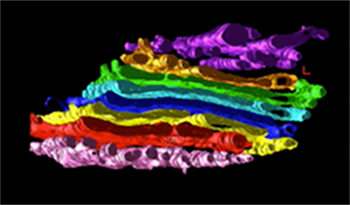
Correlative Microscopy
Extension of the reach of the correlative methods by integrating video microscopy with methods to image large multimolecular complexes by EM, or mass-spectrometry based imaging. For this we are developing probes that can be visualised in more than one imaging mode.
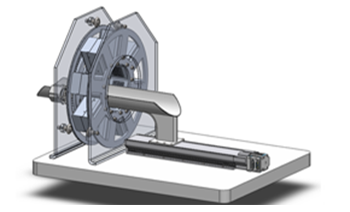
SSR-SPECT
Design and production of some specimens of PET-SPECT detectors, based on SSR (super spatial resolution) to be inserted in an advanced device to four modes (PET-SPECT-CT-Fluorescence), pre-clinical imaging for small animals.
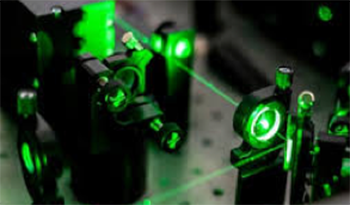
Raman-based Imaging
Enhancement of Raman microscopy using advanced optics to remove the fluorescence background, increase the resolution and reduce acquisition time and noise for application in cell imaging and lipidomic
Two photon microscopy
Animal Models and Gene Therapy Core
The Transgenic Animals Facility is active within CNR since 1999 and focuses on the generation of genetically modified mice (transgenic, knockout, knockin).The facility applies all the relevant standard transgenic technologies but also focuses on the latest methods to introduce genetic modifications in vivo: Zinc Finger nucleases (ZFN), Transcription activator-like effector nucleases (TALENs), Clustered regulatory interspaced short palindromic repeat (CRISPR/Cas-based RNA-guided DNA endonucleases). The service is offered oa collaborative and/or contributive basis also providing support and advice on projects and strategies involving the use and/or the generation of animal models.
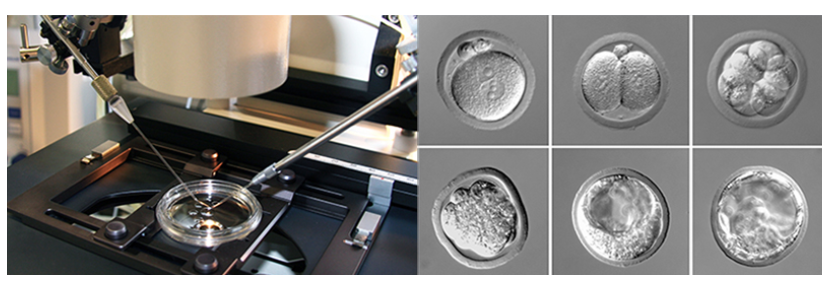
the services of the facility include:
- purification of transgenic DNA constructs;
- creation of transgenic mouse models by pronuclear microinjection of the DNA constructs in the embryos at the zygote stage and realization of knockout (KO) or knockin (KI) models by injection of mutagenized embryonic stem cells into blastocysts;
- microsurgery (vasectomies, uterine embryo transfer);
- collection, fixation and staining of murine embryos at various stages of development;
- isolation and culture of embryonic stem cells (ES) and primary fibroblasts from embryos;
- genotyping of mutant mice by PCR;
- management of mutant mice colonies (breeding, weaning, backcrossing, rederivation);
- cryopreservation of sperm and two-cells embryos, in vitro fertilization;
- collection of tissues and blood for biochemical, histological, and serological analysis;
- hormone treatments, pharmacological, and gene therapy on mice.
Teaching activity:
The Service organized a theoretical/practical course within the CNR Training Programs : Corso ‘Metodologie di riderivazione di linee murine’ and participates as teaching staff to lectures and practice on genetically modified animals in the annual course: ‘Science of Laboratory Animals’ (Recognition FELASA, Federation of European Laboratory Animal Science Associations) Cat B (No: 023 / 09).
Contacts:
- Dott. Georgios Strimpakos
Tel. +39 06 90091429
e-mail: georgios.strimpakos@cnr.it

Overview
The IBP-IGB Flow cytometry facility was established in 2010 as a shared structure among the IGB and IBP Institutes, and its equipment is in conituous implementation. Its mission is supply help in designing and perform experiments to researcher in and outside the Campus. It is located on the second floor of the Building 3 in the Pietro Castellino Campus, room 47.
The service provides:
1) Phenotypic analysis of mammalian cells:
cell cycle analysis
surface phenotypic cell analysis
intracellular staining of fixed cells
study of cell survival-apoptosis and cell proliferation.
2) Support in experimental design and assistance in data analysis
Access
The facility offer services to internal researches with the application of fee and it is open to external users upon signing a payment agreement.
First time users have to register at http://www.igb.cnr.it/facsfc .
Registered users can book the instuments here CLICK FOR BOOKING SERVICE
Equipment
The facility is equipped with a Becton Dickinson FACSAria and a Becton Dickinson FACSCanto II
The FACSAria instrument is a cell sorter that can register up to 70,000 events/second and this guarantees a good signal linearity.It is equippedwith 2 lasers beam that detect 9 different emission signals of fluorescence for a multiparametric analysis: 7 compensated fluorescence parameters and 2 scatter parameters. The instrument can contemporarily separate 4 cellular populations by analyzing events and dividing them at a maximum speed of 3000 cells/second. To separate cells it uses a dropping device that guarantees appropriate temperature, sterility and high cell recovery.
The FACSCanto || instrument is an easy-to-use benchtop analyzer with sample direct injection in the flow cell. It can register 10,000events/second, and is configured with 2 laser beam that detect 8 different emission signals of fluorescence for a multiparametric analysis: 6 compensated fluorescence parameters and 2 scatter parameters.
Training
The FacsFacility staff organizes courses and training
for new users and presentation of advanced application.
Members & Contact
Luciana D’apice 081 6132584
Laura Pisapia 0816132566
Pasquale Barba 0816132318
e.mail: facsfacility@igb.cnr.it

